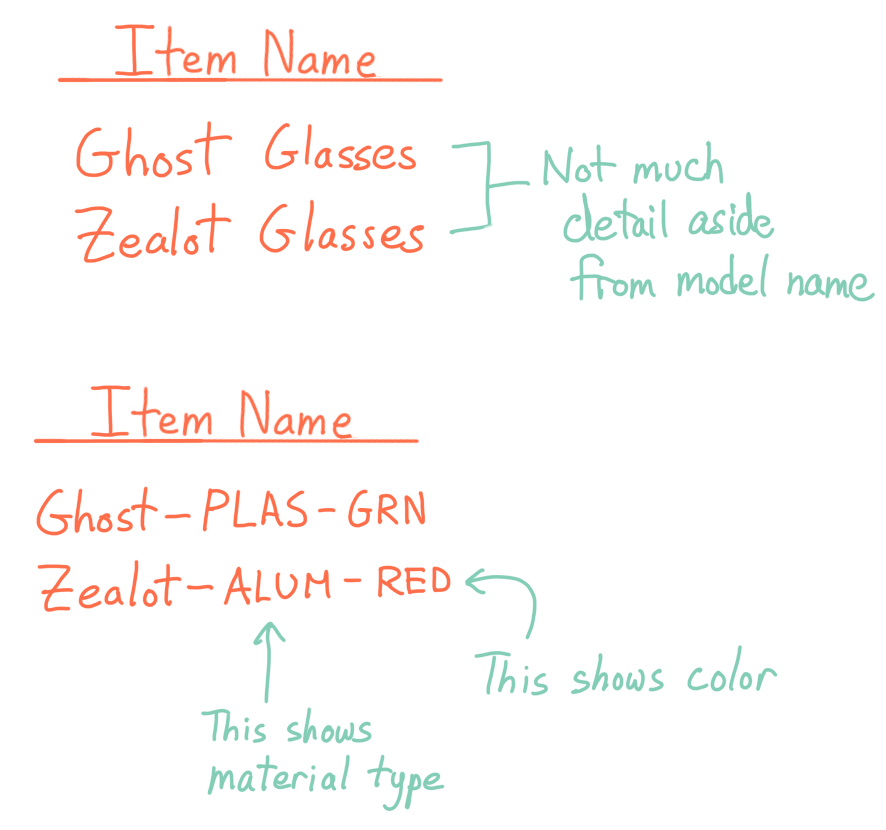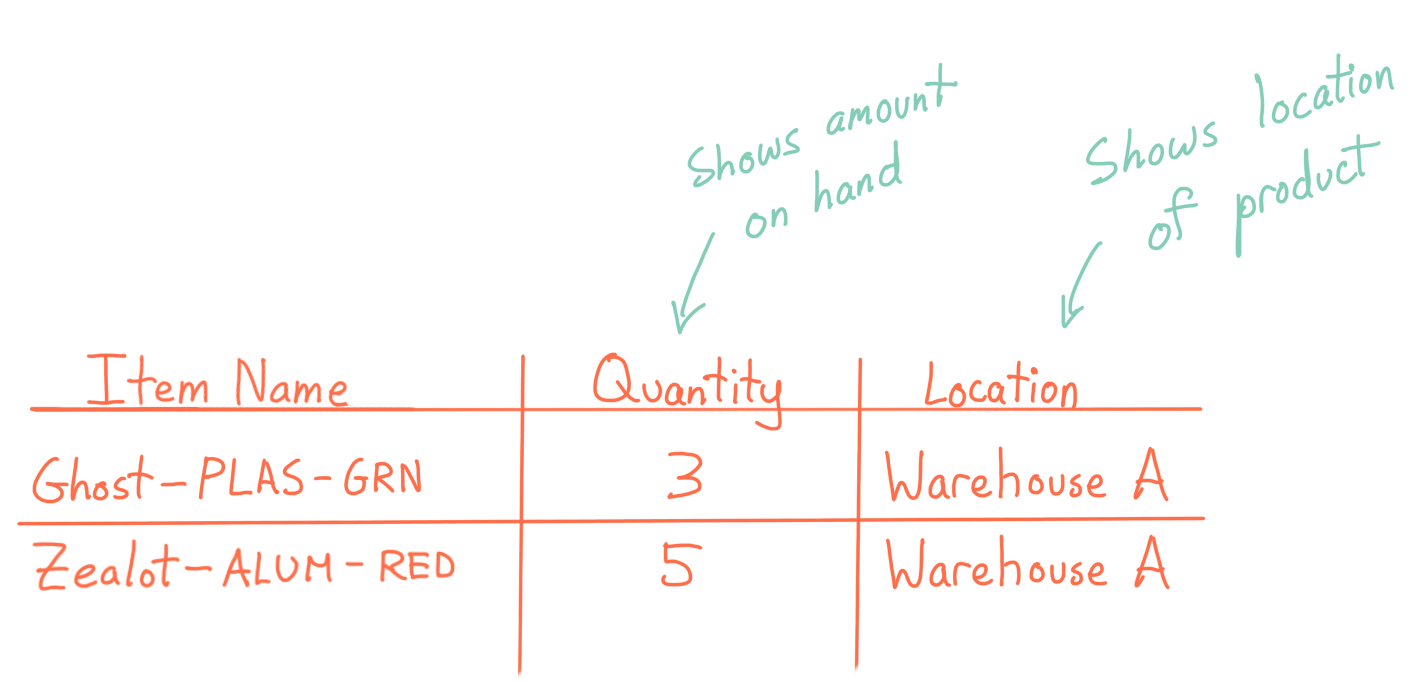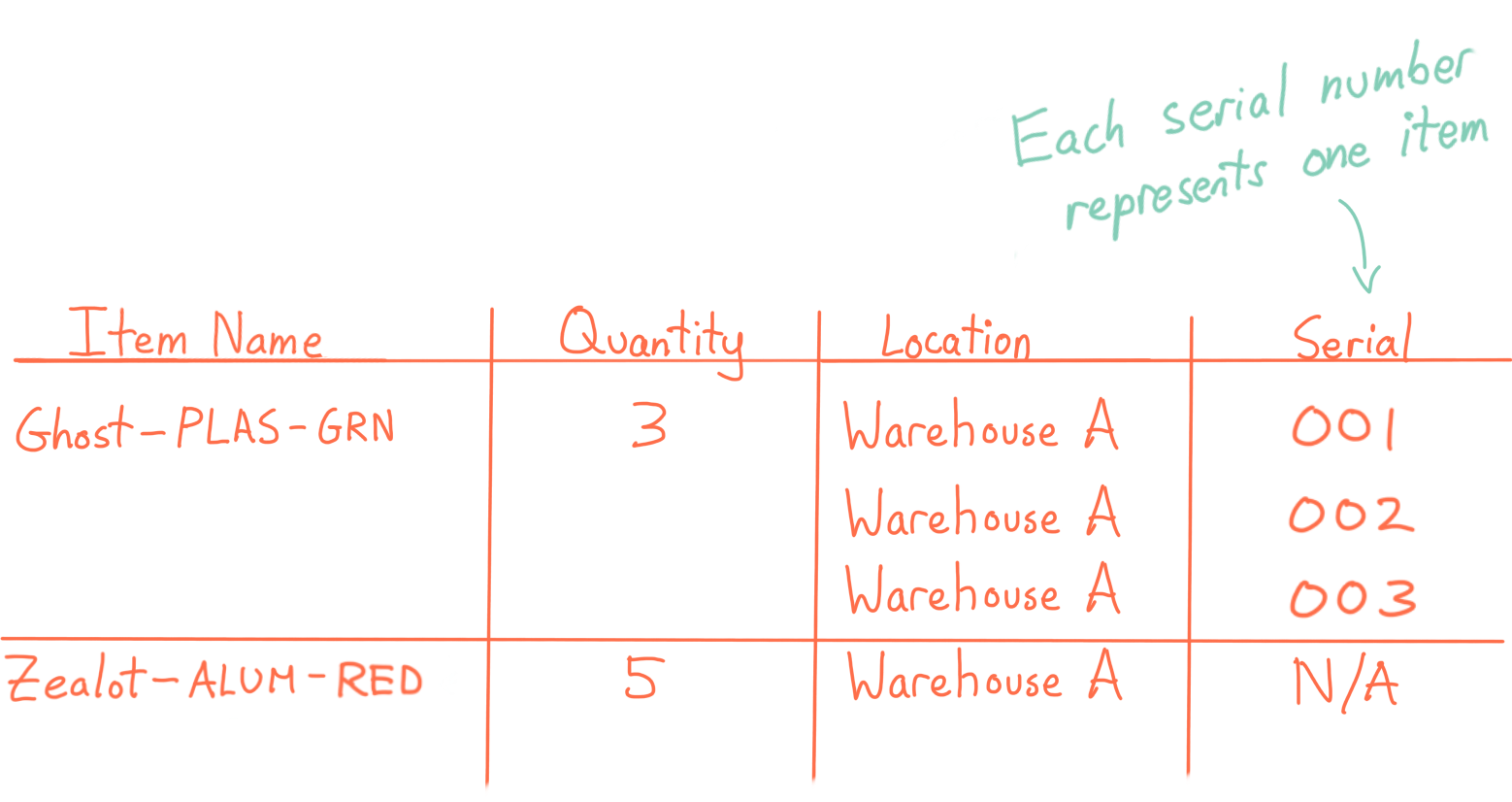If you’ve never set up or tracked your own inventory before, there are a few aspects to consider before you set up your database, spreadsheet, or ledger. You may end up changing how you track your products as your business changes, but planning out your inventory from the beginning can save you a lot of time a few months from now. Two notable things that you should consider and sort out from the outset are your product names and categories.
Choosing good product names
When you only have a handful of items, you might be tempted to label your products with simple names like “frilly red dress”. After all, that’s what you might call it, and that’s how customers will see it. But just as in the case of product barcodes, there’s a lot that you can encode into a name.
A good naming convention for items strikes a balance between being easily readable by humans — so that a new employee could learn to identify items quickly — while maintaining machine readability, so that you can sort and filter your own product list easily in a spreadsheet or inventory program. Your business needs to be quick and light on its feet, so you will want to design these capabilities right into your inventory list.
A good way to strike this balance in naming convention is by employing a structured approach that combines human and machine readability. For instance, you might label your items descriptively, such as “frilly red dress,” yet ensure machine-readability by incorporating unique identifiers, possibly by utilizing a random name generator for efficient inventory management.
Examples
Let’s discuss the example case of Archon Optical: they sell an item called “Zealot Glasses.” Entering the glasses into a product list simply based on their name works, but that isn’t forward-thinking—it doesn’t account for the different colors and materials that could be used in future Zealot editions. There could be an amazing holiday edition of the glasses made out of aluminum instead of plastic, in which case “Zealot Glasses” would no longer be enough to differentiate one model from another. The lesson here is that you may not be able to predict all the future permutations of a product, but you can build a few common variables into the item name.
Building on the idea of varying colors and materials, a better name for the Zealot Glasses would be “ZEALOT-ALUM-RED”. That accounts for the model type (Zealot), material type (Aluminum), and color (Red). What’s more, if you were to sort all of your products by item name, all of the Zealot models made out of aluminum would automatically be grouped together.

Product naming strategies
The following are some helpful strategies for naming your products:
- Use acronyms for brevity.
- Be highly descriptive.
- Use words that are easy to spell and pronounce.
- Consider your branding.
- Be prepared for inventory expansion.
- Use marketing data.
- Keep a spreadsheet.
You may be able to gain further insight from consulting a product naming agency.
Can you use the same brand name for different products?
The same brand name can be used for different products, as long as you include further categorizations to differentiate them. However, you should ensure that it is to your benefit to market the separate products under the same brand name before you commit to that decision.
Setting up product types
It’s important to understand the different product types and how they are categorized before you begin sorting out your inventory. Different types of products may require different types of inventory management strategies.
Stocked products
Will your business be stocking products regularly? If so, which ones? Those will be considered stocked items, and you will want to be able to track the quantity of those products at multiple locations.

Handling stocked products also involves setting up locations, and you’ll generally want to set up one location per major storage area. One example of this is Warehouse A, Warehouse B, and so on.
If your storage areas are fairly small and your product list isn’t very complicated, you can just start off with locations. However, if your business starts to hold more inventory and requires larger spaces that need to be subdivided, it’s common to create multiple sublocations to help organize each major location (for instance, Warehouse A, Aisle 2).
Serialized products
If your business deals with products where each instance of the product is unique and serialized, you’ll want to be able to track every individual serial number. Certain pieces of inventory software (like inFlow Cloud) will let you enter this information into a dedicated Serial field that can take in multiple serial numbers at once, but if you are using a spreadsheet, you will want to add an extra column to capture each instance of a serialized number:

Services or non-stocked products
Finally, there are products you may only carry occasionally, or services that you provide, where you don’t really need to track the quantity on hand. These would be classified as services or non-stocked products, and it’s up to you to decide whether to separate those in your own inventory system.
inFlow does differentiate between a service (like an eye exam at Archon Optical) and a non-stocked product (like a custom-ordered pair of sunglasses), but what the two product types have in common is that you don’t need to track their quantity on hand. Here is an example of what services/non-stocked products would look like alongside the other product types:
Deciding on product names, types, and locations is a good first step in setting up your shop.
Keep all your product info in one place with inFlow Cloud
inFlow already has dedicated fields for item names, descriptions, and locations — and if you already have a spreadsheet ready, you can import spreadsheets to quickly update your products in inFlow.
You can start a free inFlow Cloud trial today!






How to name a company for inventory management project